After 12 very enjoyable years I take the difficult decision to sell the ZS 180. It's now a classic in its own right, with the increasing care and attention that involves, and whilst I continue to be happy to work on the car parts are getting more difficult to come by - a rebuilt rear caliper needed to pass the MOT had to come from Estonia! - and even something simple like exhaust parts took some tracking down. There would come a day when something essential would need replacement and she would be out of action for some time. And as a foul weather car for use when conditions aren't good enough for either Bee or Vee, i.e. predominantly the winter, and she is kept and worked on outside, that's really not on. So on 27th July 2020 I sell her to someone who proposes to bring her back close to as-new condition.
As soon as the ZS had passed her MOT and I could start to think about listing her I started seriously looking for a replacement although I had been pondering it for a while. I'd like a Jag XE, but at 71 out of 100 for reliability in one review I was wary of taking the risk. Reliability being key it had to be something German or Japanese, and I simply can't countenance anything of the latter for historical reasons. I know I had a Celica for a while but that was 'inherited' from our son so didn't count. Can't stand Audi or BMW which leaves Mercedes and VW. I hired a Golf many years ago and was very impressed with the ride quality as much as anything else, didn't want to go mad with engine spec, and diesel was out, so a 1.4 TSI was pencilled in, although Golf styling is pretty bland especially compared to some offerings these days. Mercedes wouldn't normally have been in the running as for many years they were either large and outrageous or large and dull, but I started noticing the A-Class around and about as having more interesting styling and a reasonable size, although the front grilles have been getting more 'in yer face' year by year. Found a Golf at Stratford on Avon and hopefully an A-Class in Solihull to look at on successive days. Immediately very impressed with everything about the Golf. We don't normally rush into anything especially large purchases like this, but didn't want to losing a bird in the hand by leaving it until after testing an A-class, so took the plunge.
June 2021: One year on and the MOT is coming up so book it in to my favoured workshop Cranmore Garage. Clean bill of health but when driving back home I noticed the Average MPG Since Start (which what I usually have displayed) was only showing 9 mpg, and only creeping up even on the overrun - what have they done!? Suddenly realised that leaving the engine idling at an MOT as usual the average mpg would drop and drop, and after an hour of that it would only creep up again very slowly when driving off. I've known that when you switch off and switch back on again it doesn't immediately reset the 'since Start' reading but hadn't realised it kept it for as long as it took me to walk back to the workshop from home. In fact next time we went to Tesco for a full weekly shop it didn't reset then either even though we were in there probably an hour. MPG back up to normal, of course. Well, I say 'normal'. It's not used much especially in Summer and with the low consumption compared to anything else doesn't get refilled very often, but each time calculating MPG myself from full tank to full tank it's coming out at 35mpg. Which is a surprise, as even on shortish journeys it nearly always gets up to 40+ on the Since Start dashboard display.
First sight (you know what they looks like) of the Golf I was quite impressed - Limestone Grey which has a hint of brown in silver-grey, better than plain silver or grey and I wasn't keen on any other colour. Even more impressed inside with the main controls very well laid out - lighting switch with instrument dimming to the right of the steering wheel, the usual column stalks, steering wheel with horn push positioned centrally and operated by the flat of the hand or anything else (unlike the ZS with its tiny buttons that move around as the wheel is turned), and heater controls in the centre console. Manual air-con i.e. no climate control like the ZS but I think I can live with that. It does have individually heated front seats although with cloth and not leather there won't be much call for it. The sort of layout that you could get in and drive off immediately - with the exception of the electric handbrake. However even that was just a matter of lifting up a flap to apply, and pressing it down to release, so not that different from a conventional lever ... or so I thought. 3 1/2 years old with average mileage and very good condition inside and out. Test drive started off finding the position of the steering wheel didn't suit, but soon found the up and down adjustment. Still not ideal but then found the fore and aft adjustment as well, which together with seat base and backrest adjustments got me perfectly comfortable. Navigator complained during the first decent run until I discovered her lumbar support full on and mine off, and with hers off she was happy. Some people must have strange backs, we've never had a problem in umpteen cars but I know others have to use different seats and modify them, or spend tens of k on a modern car and have to stand up and walk around for a while after a longish drive. Pedal positions good. Picks up well, no sign of any accident damage in boot or bonnet, we get a good impression from JMC Stratford, and we are quite tempted. It's the first and only car we have looked at, but when you find something that seems to suit in every respect, and it's not like there is a shelf-full of identical items, what can you do? So we bought it there and then. Maybe an A-Class next time.
Got a good deal from Footman James with their Flex policy that will cover all three cars whereas they wouldn't include the ZS previously. £30 per year Road Tax - a bit of a change from the £325 of the ZS!, and pick it up a couple of days later. One of the first things I noticed is that unlike the ZS where the fuel gauge continued to register with the ignition off, this one drops to zero. But as it rises very quickly with the ignition on, unlike the MGBs, it's no hardship. The following week we have a few days planned in the Lake District, which would normally be a good opportunity to try it out and find any niggles, but as usual Vee gets the job and the Golf will just have to wait. One almost immediate drawback is that being relatively anonymous I have to remember exactly where I parked it, unlike any of the cars I've had over the past decades.
Irritations:
500 pages in the main drivers handbook and almost another 80 for the Infotainment centre takes some wading through, so I opt to dip in as and when I need to find something out. One of the problems is that the books cover all possible options on that particular version of the Golf 7, so first you have to work out whether your car has that option before you can find out how to use it! Also there are so many different variants beyond what is in the manual that Googling even 'Golf 7 (function name)' can come up with things that simply don't apply. Sometimes despite the size of the manual you still can't work something out, one example was to do with shuffle mode and music files - I could see the screen and the option to select ... but there was no clue as to how one got to that screen! Another concerned the USB port, and is best summed-up by one person posting on a Golf 7 forum "OK, I give up, where is the USB port?" (in the cubby under the heater controls). Yet another concerned the sat nav SD card, lots of info on how to update it, but it didn't tell where it is (in the glovebox). One amusing feature is before almost every subject the statement "(subject name) cannot overcome the laws of physics" i.e. "if you prang it don't blame us".
Except Auto Hold doesn't prevent rolling immediately prior to pulling away! All it seems to do is apply the handbrake when you bring the car to a halt with the footbrake (and only then if you apply it hard enough to stop the car with a jerk, or press it firmly once stopped then release). Trying various things on a hill it seemed applying the footbrake when starting the car, or before attempting to drive off solved the problem. It looked like Auto Hold then keeps the footbrake applied after the handbrake has come off, until the clutch has starts to bite, and you can pull away without rolling back, and it begs the question why isn't the handbrake like this anyway? Subsequently I discover that if creeping up a slope you have to apply the footbrake, if you just dip the clutch to come to a halt it will roll back. That's only to be expected but unlike a conventional handbrake where the lever comes to hand easily you would have to grab for the little switch lever. Even then, on a steepish slope whilst Auto Hold keeps the footbrake on until it feels the clutch is biting, it will still roll back a smidgen immediately before you start moving forwards.
If you turn off the ignition with Auto Hold in effect (or manually engage the handbrake) you can hear the handbrake come on then Auto Hold goes off, with a little jolt. Another aspect of Auto Hold is that it keeps the brake lights on until the handbrake comes on. Keeping them on in Auto Hold is pointless and dazzling for cars behind. It does the same switch from footbrake to handbrake if opening a door with the engine running, and there are other occasions where the handbrake and Auto Hold interact ... best not to think about them and hope VW have done a good job on the software logic.
Except again, Auto Hold still doesn't prevent rolling! Subsequently deliberately going through the various scenarios listed above it still rolls back as I start to lift the clutch - I give up.
January 2022: Except I can't do that. Browsing again I come across Theory Test Pro which says "Instead, the e-handbrake ‘holds' the car in position, waiting for you to gently release the clutch while pressing down on the accelerator to move away easily and smoothly; there's no need to find that pesky biting point quickly. ", which is patently not the case. Browsing more I come across this YouTube video which says (at 3 min) to find the biting point by lifting the clutch without operating the throttle and the handbrake stays on, then apply throttle and the handbrake goes off. However that needs you to engage the biting point quickly enough and hard enough to prevent rolling back as the handbrake releases, which is dependant on the hill, and exactly the same as for a manual handbrake. But that doesn't happen with my Golf - as soon as I start to lift the clutch with no throttle both the handbrake (red light on the dash) and Auto Hold (green light on the dash) go off and the car starts to move - albeit it on the flat. Then there is this video which is a bit garbled and unclear but at one point he talks about and shows the brake holding for '1.5 seconds', so maybe that's why at first I thought applying the footbrake then releasing it worked, and on another occasion didn't. There also any number of fora arguing about this and getting confused between Auto Hold and Hill Hold (hill start assist), with ODB bits being turned on and off to cause 'early', 'normal' and 'late' assist, and the amount of torque needed when you start trying to pull away before the brake releases (which may be the same thing).
Elsewhere there is an Aussie forum talking about Hill Hold (claimed to be independent of Auto Hold although my manual says "Hill Hold Assist - see Auto Hold" which says nothing about hills) saying that if the hill isn't steep enough the car will roll, and another one saying with ODB you can configure what gradient it comes in at, the default being 3%. To paraphrase Sheriff Brody - "You're going to need a bigger hill ..."
The bottom line is, if in doubt use the electronic handbrake switch exactly as you would a manual handbrake lever! Auto Hold can be unpredictable as it only comes on if you have pressed the pedal more than a certain amount.
February 2022: Except ... you can't drive off with a door open, even manually pushing the handbrake switch to release it does nothing. First I got a warning to press the footbrake, which I did and no change, then it told me to Shut That Door. Is that because Auto Hold was also turned on? Who knows!?
June/July 2022: MOT again and one thing I don't remember from the last time is that they switched Auto Hold off, and at a filling station immediately afterwards went to get the nozzle out and noticed the car moving! Leaning in and lifting the handbrake switch lever did nothing, by which time it had rolled forwards far enough to need me to get in, start up and drive back, after which I had to manually put the handbrake on before switching off. Took me a few moments to notice Auto Hold wasn't on. This clever stuff is all very well but when there are so many different ways of configuring things and you set them and leave them, if someone changes them you can be buggered. More than once I've forgotten to pull the handbrake up on the MGBs as well. Looking at replacement I notice Volvo V40 has a manual lever! Subsequently deliberately turning off Auto Hold and switching off the car still moved as expected, but this time I lifted and held up the handbrake switch and it did engage after a pause. Because a couple of times I've forgotten to pull up the handbrake on the MGBs I'm thinking now Auto Hold is inadvisable with other cars to drive, so I'm going to try leaving Auto Hold off for a while and operate the handbrake manually. But in stop-start traffic coming away from the F1 GP at Silverstone I was either having to hold it on the footbrake and roll a bit as I moved of, or engage the handbrake each time, so put it back on again! It was then that I noticed, with a van behind me, that reflected in its higher headlights my brake lights were on all the time Auto Hold was operative.
Below that the button for Start/Stop which so far I always leave engaged. It won't activate until you have been driving for a certain length of time, and in heavy traffic eventually the function will be disabled, both to protect the battery, and in the latter case maybe the starter from overheating although restarting is pretty-well instantaneous. It seems like a good idea in principle, but it's completely random. I can drive for half an hour or more and it won't cut in, then on another occasion it does so after a few minutes driving. Sometime the green 'P' symbol (Auto Hold) comes on with the Start/Stop symbol, sometimes on its own, and others not at all. One thing I have noticed though is that you stall it then it fires up again as soon as you dip the clutch, which is not unreasonable. Then one day driving in quite a bit of stop/start traffic it started operating every time I stopped, so maybe it senses congestion, not doing it for 'one-offs', which protects the longevity of the battery and starter a bit. Something Richard Mills mentioned is that if start/stop has activated turning the steering wheel - which takes a bit of effort of course - will start the engine.
January 2021: After running mostly in 'Sport' (a relative term ...) mode for most of the time I decided to try a spell in 'Normal' mode, and as that didn't seem to make any difference to the way the car performed with my style of driving, decided to try 'Eco' mode ... and neither did that ... but suddenly the Start/Stop seems to be working every time. Since no matter what you drive or how you drive it on public roads you are always have to stop for junctions, roundabouts, other traffic and so on at some point, I cannot see why Start/Stop should be limited to Eco mode only. If you were racing or on a drag-strip (in a Golf 7?) I could understand why you might want the engine running for a quick getaway, but you can turn Start/Stop off with its own button if you want. But then a couple of days later it isn't stopping again and over a month later it still isn't, and a year later it has only done it a couple of times in quick succession. Something else I have given up on. July 2022: In traffic leaving Silverstone after a while in stop-start traffic Start/Stop starts working, but it was quite a few minutes before it did. Also noticed that only moving slowly and only applying the brake lightly to bring the car to a halt the engine would cut before the car had stopped, which make the steering heavy.
Bottom right is for Park Pilot which gives audible and graphical indications of obstructions when manoeuvring. This manually turns it on and off, but it also comes on automatically when selecting reverse or when close to an obstacle. I haven't yet experimented but from reading the manual it may be that if the audible and visual warning are currently on because of an obstruction it turns them off, although if you move the car sufficiently to have turned them off automatically, but then approach an obstacle again, they will come back on again as if they had not been manually turned off.
If I knock it out of gear and let the clutch up to roll to a halt - which I don't do very often - it bongs at me and tells me to select a gear!
January 2020: After a hard frost with nothing behind me selecting reverse caused the obstruction warning to sound a continuous tone and show a red area on the display, so frost confusing that sensor. I wondered how long it would go on for (didn't think to try turning it off as above), but it changed to beeping when I started to move forwards, then when the automatic locking came in stopped altogether which was a relief. Still not working when I had to reverse into a parking space at the local shop, with stout oak posts that you can't see from any of the windows or mirrors, so care needed.
A couple of weeks later we had a few inches of snow, and coming to a T junction it started sounding off again, with the screen display telling me to take care pulling out. Later on more snow and despite conditions being worse and the temps lower it didn't do it. More erratic behaviour like Start/Stop. Maybe it worries that on ice or snow it might take longer to pull out and someone coming across could hit me, for those incompetent enough not to leave more space for that as well as for slowing down and when behind other vehicles! As I suspected above you can turn it off, but at the next junction it does it again. Talk about nannying. It's also very twitchy on ice and snow, very little by way of braking or accelerating causes the wheels to lose traction, with a warning light flashing on with wheel-spin, much worse than anything else I've owned even rear-wheel drive cars like the V8.
Rear fogs available pulling the control out one click, adding front fogs with a second click, whenever the ignition is on. Headlight 'range control' on the left to set the beam range according to the load being carried - set to the middle value both dipped and main beams are pretty close to the car on the road with two up front and minimal load in the boot. Some cars have the instrument lighting level control here, but with headlamp range control here instrument illumination can be set through the Infotainment system. Almost everything has detailed settings controlled via the Infotainment system as well as their primary controls, and a lot more besides, but my personal view is that such adjustments when underway are very distracting and potentially dangerous.
Reversing lights poor, having to reverse round the corner of a building in pitch dark countryside I couldn't see anything behind me in any of the mirrors or turning my head to look out of the windows. Maybe I've just got too used to street-lights everywhere.
November 2021: It's taken until now to discover that when the main lights have come on automatically i.e. at night turning the wheel lights the appropriate front fog light! This feature is known as 'cornering lights', I find it distracting on other cars and utterly pointless in daylight. From a quick test that's not happening, only when the main lights are on, and it seems to be a function that can be turned on and off via software and the diagnostic socket. From Googling it seems that they may also come on with the indicators that side, which I wouldn't have a problem with. So back out in the sunshine and it seems they do come on with the indicators, when the lights have been turned on manually, but they don't come on with the steering unless it's dark enough for the lights to have come on automatically.
As usual warnings to make sure the blades are free in icy weather, but you have to remember to do the back as well as the front. If you use the front wipers and then select reverse the back wiper comes on anyway.
I'd been noticing a 'clonk' from the front left of the screen occasionally when driving off from being parked overnight, and realised it was from the wipers. While they are being used intermittently they park at a certain point which is just visible from the driving seat. But if they have not been used for a while or when the car decides they aren't going to be needed, they then park a little lower completely out of sight!
By leaving the indicator stalk switched to the left or the right the parking lights will remain illuminated that side when you leave the car. Not so new, I remember a boss having a new Cortina in the 1970s where he complained that the ammeter showed a discharge while it was parked ... until the dealer pointed out just this feature! If the light switch is left in the parking light position then both sides will be illuminated when you leave the car, but there is a safety feature in that they will be switched off automatically to prevent the battery becoming discharged ... as long as there is enough power in the battery to keep them on for more than 2 hours in the first place. The automatic switch off can occur up to 16 hours if both sides are left on, or up to 32 hours if one side is left on.
Being a gentleman I don't 'motor at night' (Joseph Lucas) so it took me six months and the middle of winter to realise the door mirrors have 'puddle lights' that come on when unlocking the car. Then travelling in the dark I went to flip the interior mirror to dim the lights of following cars but could not find any lever or catch, then reading the manual subsequently discover it has a sensor and automatic dimming. Whether it switches, or dims progressively according to how bright the following lights are, isn't mentioned, and I haven't noticed it doing either.
Automatic locking of the doors when underway, but unlike the ZS being in the centre console where the passenger could unlock them if being dropped off, the Golf buttons are at the front of the driver's door armrest so the driver has to do it - or at least they would but the internal handles still open the doors, and with the first pull of the handle (not two as some marques need). However that seems to be only if the doors have been locked automatically i.e. when driving off. I keep getting a message about 'Safelock' which apparently disables the internal handles if the car was locked from the outside with the fob - a warning as anyone left inside won't be able to get out in an emergency, or from the inside using the manual button. Can be disabled with two quick presses of the key fob lock button. More playing needed.
All four windows are electric unlike the manual rears on the ZS, with a driver's on/off switch for the rears. Partial movement of the switches for stop-start down or up, full movement for 'all the way' or until the button is moved again. I think. But another time it's a bit like Goldilocks and the three bears in that some times a short press just moves it a bit, a slightly longer press moves it all the way, but a slightly longer press than that only moves it a bit again! 'Convenience' closing in that when locking the car holding the lock button down will close any open windows. July 2022: In the present hot (very hot!) weather I've been opening all the windows while parked as it is in full sun virtually all day, by unlocking, key in ignition, and using the door buttons. Then it suddenly struck me that if there is 'convenience' closing feature then maybe there is convenience opening feature as well ... and there is! Just hold the unlock button down for a few seconds and they all open. You can then either lock the doors again with a short press, or leave it without opening a door and they will lock automatically after a few seconds. Word is that this only works if enabled in the infotainment system, but some say it didn't. Others say that if you have rain-sensing wipers then the windows will close if it rains ... but don't leave the key inside!
Got a spline key from eBay which removed the rear bolts easily. Slackened the fronts as well and with a combination of about 8 clicks of the seat height lever up from its lowest position (out of 26), stopping before the front started getting too high as well, and putting 20mm blocks under the rear of the runners brought seat to almost the same level as the MGBs, and that leaves scope to go up or down from there with the seat lever. Existing bolts 35mm of thread so 55mm needed, and 20mm of washers each side. Can't find any spline bolts online, so opt for cap bolts which have nearly the same head diameter. Arrived next morning from Kayfast (always brilliant service from them) and only a few minutes to fit, so we'll see how that goes. Some months later no further complaints.
No less than 18 buttons on the steering wheel in addition to the horn buttons, eight each side. Adaptive Cruise Control and speaker volume on the left, Instrument Cluster Menus, phone and voice plus media track (and channel?) change on the right. One minor annoyance with the wheel is that it has high-gloss surfaces on the upper parts of its main 'spokes' which reflect the wipers going across and back every time.
It doesn't seem to have Lane Assist as even when using ACC there were no steering effects when I changed lanes without indicating. I don't have the courage to deliberately keep off the brakes when someone in front stops suddenly, but on the to occasions when that has happened anyway there is certainly an alarm, and it might even apply the brakes, as I went for the brakes anyway it was difficult to tell.
June 2022: At the MOT slight misting of one of the dampers was mentioned and from that came that any steering or suspension work, even tracking adjustment, requires that the ACC be recalibrated. New to me, but checking on-line confirmed it and even that after screen replacement it needs to be done as part of the umbrella of support systems known as ADAS. The system stores when it was recalibrated and insurance companies will compare that date with other records of work done, and can refuse to pay out in the event of an accident. If you had suspension/steering work done at a workshop and they haven't recalibrated or told you that it must be recalibrated then they are liable, but if they have (or you have done the work yourself and the insurance company find out) the owner becomes liable. What happens with screen replacement on your drive is a good question, although if it is done at a reputable companies premises they should have the equipment to do the recalibration.
Instrument Cluster Menus
All the main manual says about the lower 'left' and 'right' buttons is the cryptic 'audio, nav' and I can't find them in the Infotainment manual. One thing I discovered they do is to move on or back a track when playing music files, even when the Sat Nav is in navigation mode.
But first something that is a significant improvement over the ZS, and that is the battery. For whatever reason even with a battery cut-off switch so that only the clock and radio circuit was still powered, and with a new battery, it didn't take much non-use before I needed to use a charger or jump pack. But with the Golf even leaving everything powered as normal there has been no noticeable deterioration in battery (which came with the car) performance even after a few weeks on non-use.
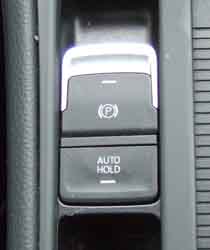 The electronic handbrake took some getting used to. I'd heard from others that these allow the car to roll back when trying to pull away on an incline, and it did. The problem is that as soon as you start lifting the clutch the brake is released, but until you lift the pedal further to the biting point and apply enough accelerator the car rolls if on a slope. I discover that if you hold the lever up it keeps the handbrake applied until you release it so much like a manual handbrake (a bit like a fly-off in fact) and OK as far as it goes, but being so small and having to get a couple of fingers under it just doesn't come to hand as easily and has to be consciously thought about, unlike a manual handbrake where you all ready have your hand on it preparing to pull away. I dare say I would get used to it but I don't like having to focus on something inside the car just as I'm about to pull away. Immediately aft of the handbrake switch is an Auto Hold button, which can be used in conjunction with the handbrake switch, and it wasn't immediately clear what that is for and exactly how it is to be used. After puzzling through the book, and reading and watching on-line info (of limited help), and experimenting, I discover that if you switch Auto Hold on, you don't have to touch either of them again - except perhaps on a very steep hill and we don't have any of those round here. When you come to a halt including with Stop/Start the handbrake comes on (but see below, and if you only brake gently the brake doesn't come on), and as you start to drive off it goes off. Where Auto Hold comes in is that it seems to prevent the roll-back between starting to lift the clutch pedal and reaching the biting point. And since then I haven't touched either control.
The electronic handbrake took some getting used to. I'd heard from others that these allow the car to roll back when trying to pull away on an incline, and it did. The problem is that as soon as you start lifting the clutch the brake is released, but until you lift the pedal further to the biting point and apply enough accelerator the car rolls if on a slope. I discover that if you hold the lever up it keeps the handbrake applied until you release it so much like a manual handbrake (a bit like a fly-off in fact) and OK as far as it goes, but being so small and having to get a couple of fingers under it just doesn't come to hand as easily and has to be consciously thought about, unlike a manual handbrake where you all ready have your hand on it preparing to pull away. I dare say I would get used to it but I don't like having to focus on something inside the car just as I'm about to pull away. Immediately aft of the handbrake switch is an Auto Hold button, which can be used in conjunction with the handbrake switch, and it wasn't immediately clear what that is for and exactly how it is to be used. After puzzling through the book, and reading and watching on-line info (of limited help), and experimenting, I discover that if you switch Auto Hold on, you don't have to touch either of them again - except perhaps on a very steep hill and we don't have any of those round here. When you come to a halt including with Stop/Start the handbrake comes on (but see below, and if you only brake gently the brake doesn't come on), and as you start to drive off it goes off. Where Auto Hold comes in is that it seems to prevent the roll-back between starting to lift the clutch pedal and reaching the biting point. And since then I haven't touched either control.
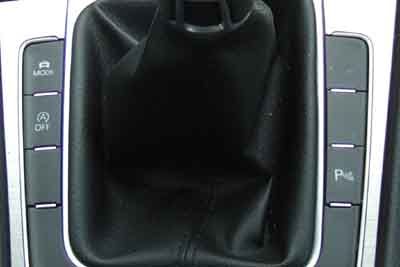 Six buttons round the six-speed gear lever, but only three functions available here. Top left 'MODE' selects the driving Profile between Comfort, Normal, Sport and Eco. I had a go switching between Normal and Sport but didn't notice any difference, so leave it in Sport. That's a relative term, while it picks up well initially it seems to run out of grunt quite quickly, a bit like a diesel, and the reverse of what I'd expect for a turbo in that there is no turbo-lag that I'm aware of. But then some time later it seems to be picking up well and keep going, even in 'Normal' mode. Maybe I've just forgotten what the ZS was like and haven't been driving the V8 enough.
Six buttons round the six-speed gear lever, but only three functions available here. Top left 'MODE' selects the driving Profile between Comfort, Normal, Sport and Eco. I had a go switching between Normal and Sport but didn't notice any difference, so leave it in Sport. That's a relative term, while it picks up well initially it seems to run out of grunt quite quickly, a bit like a diesel, and the reverse of what I'd expect for a turbo in that there is no turbo-lag that I'm aware of. But then some time later it seems to be picking up well and keep going, even in 'Normal' mode. Maybe I've just forgotten what the ZS was like and haven't been driving the V8 enough.
 But I find myself leaving the lighting switch in the 'automatic' position! This turns the parking, headlights and instrument lighting on when external light levels drop, the 'parking light' symbol shows green when they have been turned on manually or automatically, and I still check that it does show green when I think they do need to be on. However, they still need to be turned on manually when driving in bright daylight fog or road spray, so Auto maybe not such a good idea if it means you may forget to turn them on having been lulled into a false sense of security by them going on and off automatically with changing light levels. Personally I always check the symbol by the switch that glows green when they are on, when I think they need to be on. The corollary is that you then forget to turn them off when parking! There is - of course - a 'lights on' bong, but I'm sure I didn't get that having arrived somewhere having forgotten to turn them off although I did when testing it. The next time I had to turn the lights on manually in fog again I forgot to turn them off when I arrived at my destination, and didn't get the 'bong'. Nor did I when arrived back home having realised what had happened, opened the door after switching off the engine but not the lights ... and no bong. And that was because the software had turned them off with the engine! So you only get the bong if you turn the lights on then open the door without having been anywhere, and it may be that you need to have travelled a certain distance before the change from leaving them on with a bong, and turning them off with the ignition.
But I find myself leaving the lighting switch in the 'automatic' position! This turns the parking, headlights and instrument lighting on when external light levels drop, the 'parking light' symbol shows green when they have been turned on manually or automatically, and I still check that it does show green when I think they do need to be on. However, they still need to be turned on manually when driving in bright daylight fog or road spray, so Auto maybe not such a good idea if it means you may forget to turn them on having been lulled into a false sense of security by them going on and off automatically with changing light levels. Personally I always check the symbol by the switch that glows green when they are on, when I think they need to be on. The corollary is that you then forget to turn them off when parking! There is - of course - a 'lights on' bong, but I'm sure I didn't get that having arrived somewhere having forgotten to turn them off although I did when testing it. The next time I had to turn the lights on manually in fog again I forgot to turn them off when I arrived at my destination, and didn't get the 'bong'. Nor did I when arrived back home having realised what had happened, opened the door after switching off the engine but not the lights ... and no bong. And that was because the software had turned them off with the engine! So you only get the bong if you turn the lights on then open the door without having been anywhere, and it may be that you need to have travelled a certain distance before the change from leaving them on with a bong, and turning them off with the ignition.
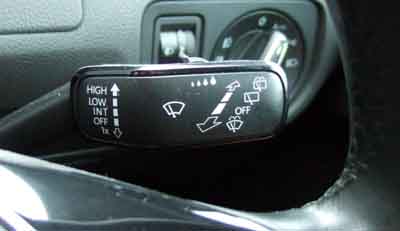 The automatic wipers were excellent in varying and torrential rain on the first decent trip. I've not found them coming on from being completely off yet, before I feel I need to clear the screen, but once positioned to the 'slowest' intermittent position they are then completely automatic, increasing the frequency of the sweeps in light rain, automatically increasing and reducing the frequency and speed as needed. Leaving them in the 'slowest' position keeps them off until some rain is detected, even on restarting the car after having been parked. The usual flick, off, intermittent, slow and fast settings using the stalk up and down, a slider button on the top to set the intermittent rate, pull the stalk for momentary front wash/wipe, push one position for rear wipe, a second push momentarily for rear wash/wipe.
The automatic wipers were excellent in varying and torrential rain on the first decent trip. I've not found them coming on from being completely off yet, before I feel I need to clear the screen, but once positioned to the 'slowest' intermittent position they are then completely automatic, increasing the frequency of the sweeps in light rain, automatically increasing and reducing the frequency and speed as needed. Leaving them in the 'slowest' position keeps them off until some rain is detected, even on restarting the car after having been parked. The usual flick, off, intermittent, slow and fast settings using the stalk up and down, a slider button on the top to set the intermittent rate, pull the stalk for momentary front wash/wipe, push one position for rear wipe, a second push momentarily for rear wash/wipe.
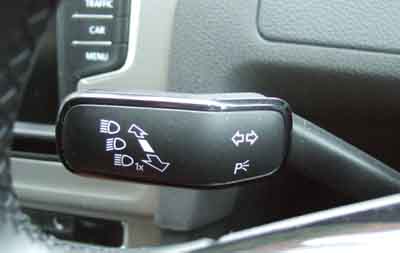 The indicator/main/dip/flash stalk is pretty-well bog-standard with the addition of a parking light function, but thankfully stays in the selected position until cancelled, and not those awful push one way to indicate then you have to push the other way to cancel, quite often I see cars repeatedly indicating one way then the other while the driver is trying to cancel them but overdoing the movement. A partial movement of the stalk not enough to cause the stalk to latch flashes the indicators three times, which in my opinion is not sufficient for any manoeuvre these days when there is so much going on and driver attention being what it is.
The indicator/main/dip/flash stalk is pretty-well bog-standard with the addition of a parking light function, but thankfully stays in the selected position until cancelled, and not those awful push one way to indicate then you have to push the other way to cancel, quite often I see cars repeatedly indicating one way then the other while the driver is trying to cancel them but overdoing the movement. A partial movement of the stalk not enough to cause the stalk to latch flashes the indicators three times, which in my opinion is not sufficient for any manoeuvre these days when there is so much going on and driver attention being what it is.
 Door mirror and central locking controls by the driver's door handle. As well as being able to position the mirrors by turning the rotary control and moving it up, down and sideways like a joystick, there is a heating function available lower right, and a position at the lower left that manually tucks the mirrors in when squeezing through a narrow gap. There is an Infotainment setting to synchronise both mirrors - I suppose if someone has moved them it saves two lots of adjustment if you are already underway. Another setting dips the passenger mirror to look at the curb when reversing, and the position is stored with the key so two people using two keys can have different settings - however I discovered that is only if the switch is turned to the passenger mirror, otherwise it doesn't move. That gets over what would otherwise be an irritation if the mirror always dipped when reversing out of a 'perpendicular' parking space limiting rear vision that side.
Door mirror and central locking controls by the driver's door handle. As well as being able to position the mirrors by turning the rotary control and moving it up, down and sideways like a joystick, there is a heating function available lower right, and a position at the lower left that manually tucks the mirrors in when squeezing through a narrow gap. There is an Infotainment setting to synchronise both mirrors - I suppose if someone has moved them it saves two lots of adjustment if you are already underway. Another setting dips the passenger mirror to look at the curb when reversing, and the position is stored with the key so two people using two keys can have different settings - however I discovered that is only if the switch is turned to the passenger mirror, otherwise it doesn't move. That gets over what would otherwise be an irritation if the mirror always dipped when reversing out of a 'perpendicular' parking space limiting rear vision that side.
 So I measured the angle of the seat cushions in the MGBs, and discovered the Golf had much more of a tilt being way down at the back/up at the front, so it was like trying to pull yourself out of a bucket. R-ing TFM, as well as fore and aft, back rake and lumbar there are height adjustments and one to control the length of the squab front to back. However this car doesn't have the latter one, and although the book seems to show two controls for height - one for the back on the side of the seat base and another under the front, they only have the former. Repeatedly lifting that lever does raise the back of the seat and does flatten the angle, but the more you go the more it raises the front as well, and moves the whole seat forwards. I could never completely reduce the angle to that of the MGBs, and although the moving forwards bit can be compensated for by sliding the whole seat back, because in the end the whole seat has risen one's head is closer to the top of the door opening with the risk of banging it or having to duck in. The occupant has said it is easier to get in and out, but feels too high - probably as a result of having spent over 30 years travelling round in MGBs. The curious thing is that the drivers seat is at exactly the same angle as the MGBs, but is not raised - with the passenger seat still not at quite the right angle it is at least an inch higher than the driver's. So plan B and investigate putting spacers under the seat rails at the rear, which may mean longer bolts, and they have 'funny' 12-spline socket screws that take an M10 spline key bit. Looking at these rear bolts led to a revelation about the severe condensation that develops in this car.
So I measured the angle of the seat cushions in the MGBs, and discovered the Golf had much more of a tilt being way down at the back/up at the front, so it was like trying to pull yourself out of a bucket. R-ing TFM, as well as fore and aft, back rake and lumbar there are height adjustments and one to control the length of the squab front to back. However this car doesn't have the latter one, and although the book seems to show two controls for height - one for the back on the side of the seat base and another under the front, they only have the former. Repeatedly lifting that lever does raise the back of the seat and does flatten the angle, but the more you go the more it raises the front as well, and moves the whole seat forwards. I could never completely reduce the angle to that of the MGBs, and although the moving forwards bit can be compensated for by sliding the whole seat back, because in the end the whole seat has risen one's head is closer to the top of the door opening with the risk of banging it or having to duck in. The occupant has said it is easier to get in and out, but feels too high - probably as a result of having spent over 30 years travelling round in MGBs. The curious thing is that the drivers seat is at exactly the same angle as the MGBs, but is not raised - with the passenger seat still not at quite the right angle it is at least an inch higher than the driver's. So plan B and investigate putting spacers under the seat rails at the rear, which may mean longer bolts, and they have 'funny' 12-spline socket screws that take an M10 spline key bit. Looking at these rear bolts led to a revelation about the severe condensation that develops in this car.
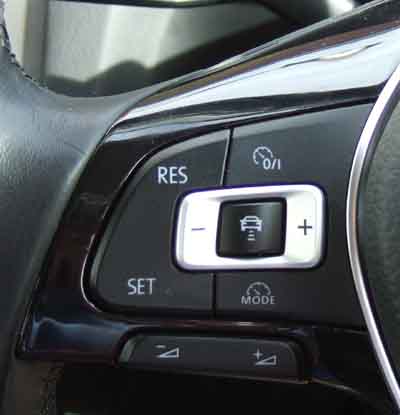
Fuel consumption
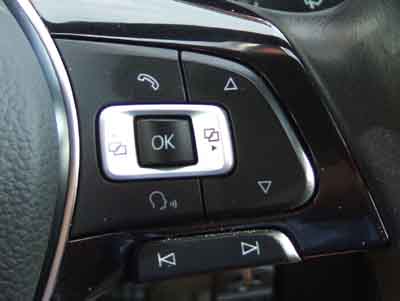
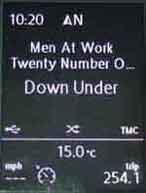



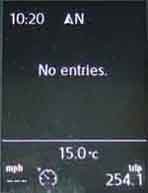

consumption 
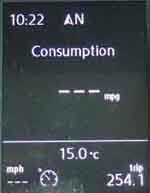
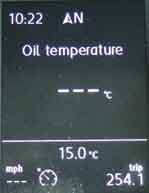
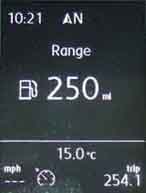

|
And the following can be displayed over one of three time periods:
consumption 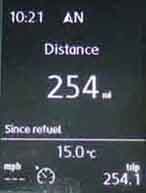
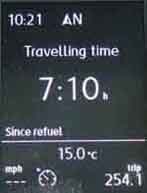
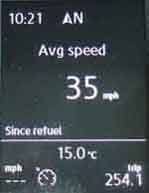
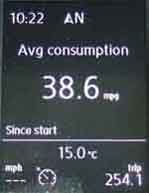
|
For example by repeatedly pressing the OK button fuel consumption can be displayed as:

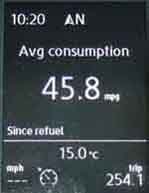

|
'Since Start' is the current journey. If the ignition has been turned on but the engine not started, or has only been turned off for a relatively short period, then it retains the data for the previous journey.
'Since refuel' is self-explanatory and is reset when refuelling is detected (somehow, gauge having gone up?).
'Long Term' continually increments up to 20 hours or 1,999 (9,999?) km then resets to zero.
Fuel consumption:
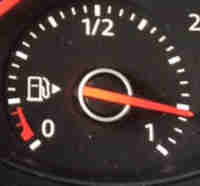 An odd one this. Even on a short journey the 'Since start' mpg can get into the mid-40s in summer, and even the high 30s in winter (more on longer journeys), but on the four (in over 12 months!) occasions I have refuelled the car filling the tank each time as normal it is only averaging 35mpg using the odometer and fuel purchased. Checking 'Since refuel' when refuelling comes out as more than 8% higher than calculating MPG from fuel purchased and miles recorded, which is also odd. November 2021: Given the first long journey probably since last winter, around 200 miles pretty-well all on motorway and fast dual carriageway, the Since Start got up to just over 50 travelling down and just over 46 coming back, and the Since Refuel shows 43+. Refuelling my figures came to 39 which is miles (!) better, with 'Since Refuel' 10% higher. There was a repeat of that trip and on the return I had a tyre pressure warning and found all four 8psi down. Initially they showed 15psi down but that was on my inflater gauge, a pencil gauge giving the higher figure. Put that right and wondered what effect that would have on consumption. Another 100-miler saw over 50mpg, and since then have regularly seen 40mpg on shortish runs and a lot of them given the rain and frost (salt) since Christmas, and refuelling saw 42 by my figures. So either correct inflation of the tyres has made a significant difference, or I'm suddenly driving more economically! Incidentally, see the little triangular arrow immediately to the right of the pump symbol on the gauge? That tells you which side of the car the filler is!
An odd one this. Even on a short journey the 'Since start' mpg can get into the mid-40s in summer, and even the high 30s in winter (more on longer journeys), but on the four (in over 12 months!) occasions I have refuelled the car filling the tank each time as normal it is only averaging 35mpg using the odometer and fuel purchased. Checking 'Since refuel' when refuelling comes out as more than 8% higher than calculating MPG from fuel purchased and miles recorded, which is also odd. November 2021: Given the first long journey probably since last winter, around 200 miles pretty-well all on motorway and fast dual carriageway, the Since Start got up to just over 50 travelling down and just over 46 coming back, and the Since Refuel shows 43+. Refuelling my figures came to 39 which is miles (!) better, with 'Since Refuel' 10% higher. There was a repeat of that trip and on the return I had a tyre pressure warning and found all four 8psi down. Initially they showed 15psi down but that was on my inflater gauge, a pencil gauge giving the higher figure. Put that right and wondered what effect that would have on consumption. Another 100-miler saw over 50mpg, and since then have regularly seen 40mpg on shortish runs and a lot of them given the rain and frost (salt) since Christmas, and refuelling saw 42 by my figures. So either correct inflation of the tyres has made a significant difference, or I'm suddenly driving more economically! Incidentally, see the little triangular arrow immediately to the right of the pump symbol on the gauge? That tells you which side of the car the filler is!
Come the clock change in Autumn and I was expecting the time to change automatically, but no, even though the central heating clock we have had for nearly 10 years does. There is nothing in either manual index for 'Clock', 'Date', 'Time' or anything else I could think of so had to go through the menus on the infotainment system looking for where it might be, selecting settings, time and date, then selecting 'Summer Time' and turning the checkbox on or off. No way is it safe for the driver to do that while under way, and an irritation. I was comparing that with simply pushing a single button (OK, maybe multiple times in Autumn) on the ZS, or twiddling a knob on Vee and Bee but I had forgotten what the menu item with the Summer Time checkbox was called so had to revert to Google and YouTube videos as with other features, to discover that it can be done with the Trip Reset button: Press and hold until the Time is displayed, release and hours will be highlit, then use one or multiple presses to change the hour. Release the button and after a pause minutes are highlit so do the same, and after another pause the driver's display panel will return to 'normal'. Whilst less fiddling about than with menus it's still arguably not safe to be done by the driver while under way, and neither can it be done by the Navigator as it usually was with the ZS and is with Vee as the clock is her side. Subsequently I discover that there is a setting that can be accessed via the VCDS (software and diagnostic socket) to change the menu checkbox from 'Summer Time' to 'Automatic summer time'! As several people have said "Why on earth don't VW use that as the default?".
![]() Wheels and Tyres: December 2021:
Wheels and Tyres: December 2021:
As it just gave a basic warning not indicating which tyre was at fault or any indication of pressure I assumed that it was the 'old-fashioned' indirect type that works off ABS and can only compare each tyre with the others, and probably can't detect a problem when all four go down at the same rate, whereas the 'direct' type monitors each wheel against a specific value and so can indicate actual pressures. This article indicates that the Golf did indeed have one system or the other depending on year, but surprisingly it shows that only for 2010 and 2011 was it the direct type, in 2012 it changed to indirect. Various fora indicate problems with the direct-type valve stems, so maybe that is why it was binned, and this indicates indirect systems are making a comeback with several manufacturers.
 Clear and easy to use with three rotary controls for temperature, fan speed and direction which is better than the ZS which was all buttons which needed multiple presses for temperature and fan speed. Buttons for individually heated seats (multiple presses on those for the level), HRW, recirculation or fresh-air, and 'A/C' and 'OFF'. From what I can tell so far the chiller comes on if you turn the heat control down, so maybe the 'A/C' button can be used to turn it off to save energy, it's not mentioned in the manual that I have found so far. Two years later and a 38C day we use the Golf to get some air-con ... and it has virtually no effect! Whether it's down to not using the car in summer, or the chiller in winter, or we weren't out in it long enough, or whether it's just not up to cooling at 38C I don't know. The following week I test it on an 18C day and gets down to 10C fairly quickly, but as the ZS 180 got down to 3C immediately after a regas it's almost certainly not working properly. If I were keeping the car I wouldn't bother having it seen to, but as we are thinking in terms of changing to a Mercedes A-class soon I probably will have to for resale value reasons.
Clear and easy to use with three rotary controls for temperature, fan speed and direction which is better than the ZS which was all buttons which needed multiple presses for temperature and fan speed. Buttons for individually heated seats (multiple presses on those for the level), HRW, recirculation or fresh-air, and 'A/C' and 'OFF'. From what I can tell so far the chiller comes on if you turn the heat control down, so maybe the 'A/C' button can be used to turn it off to save energy, it's not mentioned in the manual that I have found so far. Two years later and a 38C day we use the Golf to get some air-con ... and it has virtually no effect! Whether it's down to not using the car in summer, or the chiller in winter, or we weren't out in it long enough, or whether it's just not up to cooling at 38C I don't know. The following week I test it on an 18C day and gets down to 10C fairly quickly, but as the ZS 180 got down to 3C immediately after a regas it's almost certainly not working properly. If I were keeping the car I wouldn't bother having it seen to, but as we are thinking in terms of changing to a Mercedes A-class soon I probably will have to for resale value reasons.
However! Come the autumn and some cold weather, the heater doesn't warm up very quickly which I suppose could be a factor of the thermal efficiency of the engine. Understandable, but the demisting performance is abysmal - it takes absolutely ages to even start clearing the bottom of the screen, and doesn't fully clear it even after half an hour of driving, and that's after having stopped to wipe it. This is worst car I have ever had for screen clearing and no mistake. But it looks like the main cause of this problem is the masses of condensation that develops inside - droplets so big they run down which I have never seen before. Googling, both complaints are very common, with the condensation even more so than the screen clearing which can take five to 10 minutes, with no one having any real idea (after checking the carpets) as to why it happens, and the rear screen clearing isn't much better. The only suggestions being switch to recirculation mode before switch-off which might stop damp-laden air coming in - something I've never had to do before, or buying dehumidifying pads. I'm surprised that (a) in this day and age it hadn't been sorted years ago, and (b) a company like Volkswagen would market a car with it this poor. The next car I buy will be in winter!
Another significant difference with the colder weather is fuel consumption! I have the display set to 'Since Start' which up to now had always rapidly increased within a short distance and had been 40+ after just a few miles. With the temperatures below 10C it's only creeping up, and barely reaching 30 over the same journey.
Trying to work out why demisting is so bad I turned on the ignition, switched to demist and used a piece of paper to try and judge the air-flow and discovered that fan speeds 5 and 6 didn't increase the speed over 4 - aha! Knowing that fan resistor packs failing is not uncommon on many cars I Googled it but whilst I could find info on changing the pack on the Golf 5 and similar, and 2nd-hand resistor packs for the Golf 7 at £30 upwards, there was no info on accessing the Golf 7 packs. But using the earlier info there seems to be the same flimsy undertray under the glovebox, with push-to fasten trim pegs instead on some that unscrew, and there was the resistor pack on the side of the motor. The curious thing was that despite being six speeds (five plus off) there were only five wires ... and two of those were to the motor! The remaining three were two pretty thick ones so almost certainly the 12v and earth, and a very thin one probably the control. I didn't want to splash out on a resistor pack if it was the switch or the wiring that was faulty, so tested all five wires with a voltmeter while I turned the control up and down. One of the thick wires shows 12v all the time, and one of the output wires showed voltage increasing as I turned up the control except for the last two positions, but no change on the other wires. Pondering that over lunch I wondered if the link between the control and the resistor pack was computer controlled as so much stuff is, and whether the electronics prevented the motor running at 5 and 6 to save the battery if the engine wasn't running. Went back out and started the engine this time, and now I get all six speeds, so nothing to do with the poor demisting, which is probably down to the heavy condensation more than anything else.
Whilst the ZS could get condensed if we had used it in heavy rain and brought it in on our clothes, shoes umbrella etc. one wipe or dry use was enough to clear it, but not the Golf. The ZS would start clearing a patch up from the bottom and the central area of the rear almost straight away, but there was no sign of the Golf starting to clear. I had to wipe my half so I could carry on driving but I left the passenger half so I could see how that progressed, and it took several minutes to get half-way up the glass. On a dry-ish day with some sunshine I had to wipe all the windows with a damp chamois leather to absorb as much as I could then leave all the windows down about an inch for most of the day. That kept it clear for the next three days (not being used) even though one was damp and drizzling all day, so it's not water getting in. Recirculation mode turned off so it's not that either. Then using it on another cold damp day instead of the glass instantly misting when starting off which is normal and the demister clearing it, all the windows started to mist up slowly as we were driving along. The direction control was set to foot/face which is our normal setting, setting it to 50:50 screen/foot with the fan on 2 nothing happened, but setting it fully to screen cleared it. Setting it back to 75/25 screen/foot and it slowly started building up again.
As mentioned earlier the carpets are dry all round with no sign of water in the car, I'm not leaving damp dusters in there, but the screens particularly the front aren't just misting-up overnight but developing droplets so big they run down the screen, and that after just two short trips in cold and damp weather, it wasn't even raining. There are loads of complaints about this on Golf 7 fora as well as the poor demisting. It seems completely random - on some occasions there is no condensation before starting at all, and at others there is, with no correlation with weather or usage that I can find. Wiping internal condensation with a duster just spreads droplets about which severely limits visibility driving into the sun or with oncoming headlights. I bought two silica gel packs but they don't seem to help (no change in colour to indicate they need drying out yet) so before I spend more money on a demister cloth I'm going to try keeping a damp chamois leather in a plastic bag to see what that does.
January 2021: Not bothered with the chammy in a bag, only get in the car to find a little mist on the front screen occasionally, nothing like that water streaming running down, Pingi gel bags still not changed colour.
A couple of weeks later with snow and ice the bottom half of the screen is covered in droplets of water and the rest misted, even though the gel bags are barely showing any pink. I did mop it up with a damp chammy and it had to be wrung out, so now it is in a poly bag in the car. Next day more ice and snow on the screen but just light misting inside, which the chammy - part frozen! - cleared easily.
Mid Feb and at long last a bit of sunshine and warmth, and one evening I notice the front, back and one side are heavily misted, with no sign of colouration on the gel bags. Too late to mess with it so next morning I went out intending to mop it up with the chammy and all bar a small bit on the screen had gone, and later that day it had all gone. Another wet afternoon, overnight and morning and it's still clear. There really is no rhyme nor reason, and the gel bags seem to be useless. I can understand a bit of sunshine causing the misting, but if the bags aren't going to absorb it then they won't at all. However I did put one in the microwave (in the instructions!) for six minutes on low although I have no idea what wattage that is, and on taking it out as well as hot it was obviously giving off a lot of moisture. I laid it on a paper envelope and in seconds that had wrinkled up and was also very damp, so it must have absorbed something. Subsequently I dried both on a radiator overnight, the colour disc was showing faintly blue, but back in the car next day it just went to white. So for a couple of days not using the car I took them out each night to go on the radiator, then back in the car next morning, with the same barely blue to white colour change. So maybe they are doing something, but this night and morning business every day is just not on. All I can do is on a sunny day - which does seem to be when the condensation appears - is to open all the windows and hope it dries out.
And then suddenly, a revelation! I'd been looking at seat adjustments as The Navigator had been struggling to get out which seems to be down to the angle of the seat cushion being much lower at the back/higher at the front than the MGBs or the driver's side, which means it's like trying to get out of a bucket. Opened the rear near-side door to have a look at the rear seat-rail bolts ... to find water lying on top of the seal at the bottom of the door opening which promptly ran out onto the ground! That's effectively inside the car, so would definitely be a cause of warmth evaporating it into the air, to condense out onto the glass as the car cooled down. There are also signs of what could be water in the perforations of the speaker grille, which could be indicating it's running down the cabin side of the door cards, I won't know until I can get hose on the outside. But despite water lying on top of the seal, which would overflow to the inside if it builds up enough, the carpet immediately below where it was lying and in the footwell still shows no signs of dampness. Whilst I'm not opening the rear doors all the time, I have done of course, but it's not been there before. Watch this space!
A couple of days later I spray a hose all round the door for a couple of minutes, allow it to finish dripping - noticing a runnel off the bottom that carried on for a minute or so, opened the door and there was water on the seal! Prodded the door card above it and I could see droplets. Googled how to get that off - a lot more effort needed to pop the clips and lift it off than they showed! - and could see it was coming from behind the speaker.

Bottom left is a simple rotary and push control for volume and turning the display off, bottom right ditto for scrolling through the menus and selecting options. The strip below the display screen is a proximity sensor that brings up relevant function buttons at the bottom of the screen when your hand is brought near.
'RADIO' - self-explanatory.
'MEDIA' - relates to sound files on CD, SD cards and USB sticks. With umpteen different ways of playing tracks when they are in files and folders it took some time in the manual and online working out how to set up the 'mix' function to pick from multiple folders. Subsequently it lost that ability and had to be reprogrammed which I only discovered by randomly trying menu options in desperation as the manual doesn't tell you how to get to those screens, and during that I discovered that you can fast-forward and rewind using the progress bar at the bottom of the display. Failed again next day, but not the next or the next. Then browsing Google hits about this problem one mentioned a software update and sat nav ... and it suddenly struck me that I did update the maps at the beginning of October, and quite possibly hadn't played my USB stick since then. The last time I used it there was the really weird situation where instead of pressing the Media button repeatedly to start and stop the playing of my stick, it cycled through a third option which played a set of tracks I had never heard before ... which turned out to be a POs CD still in the drive!
The first time it lost the ability to Mix I can't remember if the 'Mix/repeat including sub-folders' option was selected initially, but certainly selecting and deselecting both it and the 'Mix' symbol on the current track screen did nothing, except now maybe it was working within the current folder. Going into the USB menu 'Mix/repeat including sub-folders' was selected there and made no difference, and I had to go into the Media Setup page, deselect and reselect it there, before it went back to mixing across all the folders, but again I can't remember if that was all I had to do. Next day it had lost the ability to 'mix' again, and this time at one point it seemed to lose the memory stick altogether. Unplugged that and plugged it back in, but still no mix even though I could turn the mix symbol on and off while playing, and turn it off and back on in the USB menu. I had to go into the main menu, deselect and reselect it there before it would mix. But after parking up while I went into a shop it was still OK. Possibly a factor of having updated the sat-nav.
February 2021: No changes to anything but not played any media for a while. Lost 'mix' again, and this time no amount of selecting, deselecting, unplugging and plugging back in made any difference. Going back to the manual, again reading about 'file view' and 'database view', and playlists, again not finding how to navigate to those sections in the menus, and again by repeatedly poking various menu options I suddenly find myself in a screen with a Database View option displayed, but again have no idea how I got there. More poking and I find myself in a screen showing my playlists. It may be that the problem stems from having artists stored in folders on my computer and I have simply copied that structure to the USB stick. But why 'Mix/repeat including sub-folders' restricts mixing to the current folder now, when previously it mixed across folders, I have no idea. It's only when I select a playlist which then lists all my tracks from all the folders on a single screen, that 'mix' now will do a random selection across all my tracks. I don't remember those screens from last time, and how I got 'mix' to work across folders last time I have no idea. It's bloody annoying as I have to spend several minutes waiting to drive off before I can get it to work, or simply not bother. It may be easier to put all the tracks at the same level in the USB stick.
August 2021: It's only playing the first folder again, so I've given up and put all the tracks in the root folder.
'PHONE' - wasn't sure I'd bother with it but a read of the manual, and confirming my ageing Nokia Windows phone had bluetooth, it was worth a go. Self-explanatory how to search for your phone, and with the phone bluetooth section open and following the on-screen prompts, got them connected easily. Phoning in and out using the 'phone' button on the right of the steering wheel was fine. Couldn't see the SMS menu option to send a text from the car, and when one was received the phone's Cortana came on over the car's audio system asking if I wanted to read it, but couldn't see how to confirm - voice command? As far as sending a text goes it looks like the car will only display that option if the phone bluetooth has Message Access Profile capability.
'VOICE' - selecting Infotainment button or steering wheel button tells me to get some kind of key from my dealer, so presumably not available.
'NAV' - sat-nav is mixed, but I cannot understand why cars do not have full the post-code function when a little thing like a mobile phone does, especially when you can program in the full address. But if you have no street name it is absolutely useless as was the case when going to an industrial estate. I could see the estate to the right of my position on the map, but it kept insisting I turn left, and to do a U-turn when I turned into the estate. My sat-nav version seems to be original to the car, and I eventually found out how to get a later version. But whilst the downloaded files have a later date the in-car system still displays the same version, although trying it on a local junction that had changed from a roundabout to a crossroads the correct instructions are given. It was amusing when driving on a new bypass to see the screen show me ploughing across a field and making my own road. You can obtain and install updates as described here.
'TRAFFIC' - allied to sat-nav and radio, not looked at that yet.
'CAR' - allows you to control a number of settings, one of them being able to display 'race' information such as instantaneous inlet manifold pressure, horsepower and G-forces, and the ability to record lap times - I ask you!
'MENU' - probably gives access to everything and deeper functions of some that exist elsewhere.
 The cover on the closing handle pops off by twisting a large flat-blade screwdriver in the small slot that can be seen at the top front edge. Behind that is a T30 Torx screw.
The cover on the closing handle pops off by twisting a large flat-blade screwdriver in the small slot that can be seen at the top front edge. Behind that is a T30 Torx screw.
 Lower down there is another T30 Torx screw.
Lower down there is another T30 Torx screw.
 At the bottom there is a reflector that can be prised down with finger-nails.
At the bottom there is a reflector that can be prised down with finger-nails.
 Behind that there is a plastic 'screw' that is turned 90 degrees with either a Torx screwdriver or a 10mm socket, to release and reattach the panel.
Behind that there is a plastic 'screw' that is turned 90 degrees with either a Torx screwdriver or a 10mm socket, to release and reattach the panel.
 Then it's a case of prising the bottom edge of the door car forwards, one clip at a time of the six that are there. These were very tight on mine, I had to use a plastic wedge to lift the edge far enough to get my gloved fingers in and pull. It was only when I got it off that I discovered the clips have to be levered in a particular way to 'open' them.
Then it's a case of prising the bottom edge of the door car forwards, one clip at a time of the six that are there. These were very tight on mine, I had to use a plastic wedge to lift the edge far enough to get my gloved fingers in and pull. It was only when I got it off that I discovered the clips have to be levered in a particular way to 'open' them.
Finally the whole panel has to be pulled upwards to come away from the top of the door by the glass, and this was really tight.
 I say finally, but there are two cable connectors and the handle cable to deal with. The connectors click in, it's a case of finding the levers on the sides and squeezing them in while you pull gently. However it's easiest to remove the upper one (tweeter) that's more easily seen from above first, then disconnect handle cable, then you can rotate the panel through 90 degrees and see what you are doing with the second, lower connector (window switch).
I say finally, but there are two cable connectors and the handle cable to deal with. The connectors click in, it's a case of finding the levers on the sides and squeezing them in while you pull gently. However it's easiest to remove the upper one (tweeter) that's more easily seen from above first, then disconnect handle cable, then you can rotate the panel through 90 degrees and see what you are doing with the second, lower connector (window switch).
 The handle cable is a masterpiece of design. Pull the cable end and it will slide back and lift away from the panel.
The handle cable is a masterpiece of design. Pull the cable end and it will slide back and lift away from the panel.
When all that was done and the panel was off I could see that the water had been coming from behind the speaker, which is surface-mounted on the inner skin of the door, and that led to a whole world more pain.
 Water was coming from the back of the rear near-side speaker and running down behind the trim panel to sit on top of the seal, effectively inside the car, causing a massive problem with condensation.
Water was coming from the back of the rear near-side speaker and running down behind the trim panel to sit on top of the seal, effectively inside the car, causing a massive problem with condensation.
 Pop-rivets with washers through plastic lugs on the speaker flange secure it to the door, drilled out easily enough to release the speaker, carefully drilled a bit further then tapped through with a punch to avoid damage to the paint, the remains being picked out afterwards.
Pop-rivets with washers through plastic lugs on the speaker flange secure it to the door, drilled out easily enough to release the speaker, carefully drilled a bit further then tapped through with a punch to avoid damage to the paint, the remains being picked out afterwards.
There is a sponge seal on the back of the speaker flange, and I could see this was broken in a couple of places including at the bottom, with signs of water having run past. Close examination revealed that all four flanges were cracked, with some of them running under the seal. The back of the speaker is exposed to any water running down past the window seals, and if it can cross the seal anywhere round the circumference of the speaker it will of course run off the bottom, which means it's not necessarily the bottom that is letting water past the seal.
Easy, I though, scrape off the old seal, put some non-setting sealant round the whole of the flange and rivet holes, and re-rivet. I had some rivets that were fat enough for the holes but not long enough to go through the speaker flange and expand behind the door skin, and some that were long enough but not fat enough to grip the back of the door skin, so found some self-tappers of a suitable size. They happened to have washers on to spread the force around the cracked flanges, so in it went. I just hooked the door trim on so I reconnect everything as I needed to use the car, sprayed the door with water and it was still dripping off the bottom of the speaker. So off it came again, more sealant applied to the speaker flange and the edge of the hole, including round the fixing holes, and put the speaker back. It rained that night, and was still coming through.
 Googled for a replacement speaker. Loads of used, but all had visible cracks in the flanges and suspect seals like mine so no good to me. Along the way lots of complaints about VAG speakers causing water leaks, to go with the complaints about Golf condensation! If they had mounted the speaker on the back of the door trim and just indented the door skin for the back of the speaker there wouldn't have been a problem. I rang the local VW dealer who quoted £40 inc VAT for new which isn't that bad, available tomorrow, but I had another trick up my sleeve. That was to put a poly membrane on the back of the inner door skin with duct tape which I could fit through the hole. Didn't fit the speaker again just poured water over the door, went round to look in from the other side and success ... until it started a slow drip. Pull that off and inspect inside with a mirror and light and there is a welded flange just above and to one side of the speaker hole, so not a flat surface but leaving a crevice. Can't really see any alternative to a new speaker, so ordered.
Googled for a replacement speaker. Loads of used, but all had visible cracks in the flanges and suspect seals like mine so no good to me. Along the way lots of complaints about VAG speakers causing water leaks, to go with the complaints about Golf condensation! If they had mounted the speaker on the back of the door trim and just indented the door skin for the back of the speaker there wouldn't have been a problem. I rang the local VW dealer who quoted £40 inc VAT for new which isn't that bad, available tomorrow, but I had another trick up my sleeve. That was to put a poly membrane on the back of the inner door skin with duct tape which I could fit through the hole. Didn't fit the speaker again just poured water over the door, went round to look in from the other side and success ... until it started a slow drip. Pull that off and inspect inside with a mirror and light and there is a welded flange just above and to one side of the speaker hole, so not a flat surface but leaving a crevice. Can't really see any alternative to a new speaker, so ordered.
Obviously cracking of the flanges by the fixing holes is a common problem, so I set about making some reinforcing strips to spread the load over a much wider area of flange, fortunately the screws are long enough. However when I got the new speaker I realised the area of the flange round the holes was thickened both sides so spreading the load might have caused cracking rather than preventing it.
 Scraped and wiped the old sealant off, then put just a smear of fresh both sides of the hole to prevent any water seeping through the threads - hopefully, and fitted the speaker. Tested it before going any further - always test everything a soon a possible, even from VAG. Trickled a watering-can over the bottom of the glass going back and fore, stopping periodically to check ... and after a can and a half no trickle! Fitted the clips to the door trim, reconnected the tweeter, window switch and door opening cable and hung it on top of the door, tested everything including the handle both locked and unlocked. All good, so banged the six clips home, fitted the two screws, turned the bottom plastic fastener 90 degrees, refitted the reflector and the handle trim, and that was it. I'll obviously be keeping an eye on it from now on until I'm confident it is a 'permanent' fix.
Scraped and wiped the old sealant off, then put just a smear of fresh both sides of the hole to prevent any water seeping through the threads - hopefully, and fitted the speaker. Tested it before going any further - always test everything a soon a possible, even from VAG. Trickled a watering-can over the bottom of the glass going back and fore, stopping periodically to check ... and after a can and a half no trickle! Fitted the clips to the door trim, reconnected the tweeter, window switch and door opening cable and hung it on top of the door, tested everything including the handle both locked and unlocked. All good, so banged the six clips home, fitted the two screws, turned the bottom plastic fastener 90 degrees, refitted the reflector and the handle trim, and that was it. I'll obviously be keeping an eye on it from now on until I'm confident it is a 'permanent' fix.
 Heavy rain overnight so checked next morning ... and success! Then checked all the other doors and found the same problem with the driver's side rear door, so have to go through it all over again. This time the speaker isn't so badly damaged so I opt to refit it sealing it in a different way, sealing behind the speaker with polyethylene to stop water reaching it in the first place, stuck round the opening with duct tape. Because the speaker still has intact flanges I use long, slender pop-rivets with backing washers front and rear, and sealant on the backs of the pop-rivet hole to try and stop ingress that way. Seems to have stopped water getting in testing with a watering can, but a couple of weeks later a wash with a hose brush shows a little on top of the seal, and heavy prolonged rain whilst not appearing on top of the seal does seem to have dampness in the folds. It can stay that way for the time being and I'll reassess in the Autumn/Winter.
Heavy rain overnight so checked next morning ... and success! Then checked all the other doors and found the same problem with the driver's side rear door, so have to go through it all over again. This time the speaker isn't so badly damaged so I opt to refit it sealing it in a different way, sealing behind the speaker with polyethylene to stop water reaching it in the first place, stuck round the opening with duct tape. Because the speaker still has intact flanges I use long, slender pop-rivets with backing washers front and rear, and sealant on the backs of the pop-rivet hole to try and stop ingress that way. Seems to have stopped water getting in testing with a watering can, but a couple of weeks later a wash with a hose brush shows a little on top of the seal, and heavy prolonged rain whilst not appearing on top of the seal does seem to have dampness in the folds. It can stay that way for the time being and I'll reassess in the Autumn/Winter.
Which when it comes around is showing condensation inside again although nowhere near as bad as originally, and only traces of moisture sitting on top of the driver's side rear door seal instead of a pool after heavy rain. But even though it is only misting the system still takes 10-15 minutes to clear it off the front screen despite that being selected as the direction, full blower, full heat, and dash vents closed - poor.
Now that the Golf is, to be blunt, just a car and not a hobby like the ZS, and because I'm not getting any younger I've decided to have major stuff like cambelt change done by my MOT place Cranmore Garage. So a year after purchase that is due, as is an oil and filter change so off it goes. £340 for the cambelt job and £100 for the oil, filter and sump-plug and washer. I may do future oil and filter changes if nothing else needs doing, I'll see how I feel. Not planning to keep this Golf very long, but for the replacement I'll have to consider its age more carefully otherwise I'll end up having to do the cambelt or chain on that as well.

